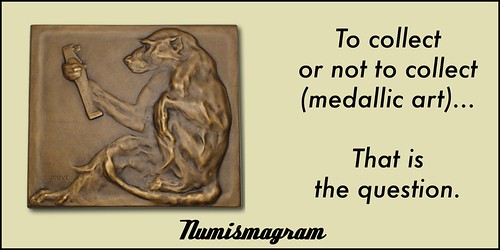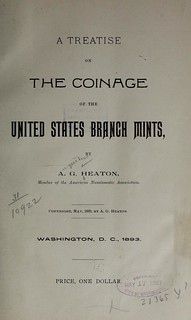
PREV ARTICLE
NEXT ARTICLE
FULL ISSUE
PREV FULL ISSUE
HEATON'S MONOGRAPH ON MINT MARKSNumismatic bibliophiles will appreciate Dave Bowers' September 12, 2018 article in the Mint News Blog about the rise of mint mark collecting, which was fueled by the publication of a book. -Editor
That changed in 1893 when Augustus G. Heaton published his landmark monograph, A Treatise on the Coinage of United States Branch Mints, for sale for just a dollar. His 1893 monograph listed 17 “causes of attractiveness”—interesting to review today: First. Mint Marks in their progressive issue at New Orleans, Dahlonega, Charlotte, San Francisco, and Carson City show the direction of our country’s growth and its development of mineral wealth. Second. Mint Marks in their amount of issue in varied years at different points offer the monetary pulse of our country to the student of finance. Third. The denominations of any one Branch Mint, in their irregular coinage and their relation to each other at certain periods, indicate curiously the particular needs of the given section of the land. Fourth. A knowledge of the Branch Mint coinage is indispensable to an understanding of the greater or less coinage of the Philadelphia Mint and its consequent numismatic value. Fifth. A knowledge of the coinage of the different Branch Mints gives to many usually considered common dates great rarity if certain Mint Marks are upon them. Sixth. Mint-Mark study gives nicety of taste and makes a mixed set of pieces unendurable. Seventh. Several dies were used at Branch Mints which never served in the Philadelphia coinage, and their impressions should no longer be collected as mere varieties. Eighth. The very irregularity of dates in some denominations of Branch Mint issues is a pleasant exercise of memory and numismatic knowledge. Ninth. This irregularity in date, and in the distribution of coinage, gives a collection in most cases but two or three, and rarely three or more contemporaneous pieces, and thus occasions no great expense. 10th. As the Branch Mints are so far apart their issues have the character of those of different nations, and tend to promote correspondence and exchange, both to secure common dates in fine condition and the rarities of each. 11th. The United States coinage has a unique interest in this production at places far apart of pieces of the same value and design with distinguishing letters upon them. 12th. As Mint Marks only occur in silver and gold coins they can be found oftener than coins of the baser metals in fine condition, and neither augment or involve a collection of the minor pieces. 13th. As Mint Marks have not heretofore been sought, or studied as they deserve, many varieties yet await in circulation the good fortune of collectors who cannot buy freely of coins more in demand, and who, in having access to large sums of money, may draw therefrom prizes impossible to seekers after older dates. 14th. The various sizes of the mint marks O, S, D, C, and CC, ranging from the capital letters of average book type to infinitesimal spots on the coin, as well as the varied location of these letters, defy any accusation of monotony, and are far more distinguishable than the characteristics of many classified varieties of old cents and ‘colonials.’ 15th. Mint Marks include noble enough game for the most advanced coin hunter, as their rarities are among the highest in value of United States coinage, and their varieties permit the gathering in some issues of as many as six different modern pieces of the same date. 16th. The face value of all the silver Mint Marks to 1893, being less than one hundred and fifty dollars, they are within the means of any collector, as aside from the economy of those found in circulation, the premiums for rarities are yet below those on may coins of far inferior intrinsic worth. 17th. As the new Mint at Philadelphia will have a capacity equal to all existing United States Mints, it is probable that others will be greatly restricted or even abolished in no long time, and that Mint Marks will not only cease as an annual expense, but be a treasure in time to those who have the foresight to collect them now. To read Heaton's Monograph on the Newman Portal, see: To read the complete article, see:  Wayne Homren, Editor The Numismatic Bibliomania Society is a non-profit organization promoting numismatic literature. See our web site at coinbooks.org. To submit items for publication in The E-Sylum, write to the Editor at this address: whomren@gmail.com To subscribe go to: https://my.binhost.com/lists/listinfo/esylum All Rights Reserved. NBS Home Page Contact the NBS webmaster 
|
